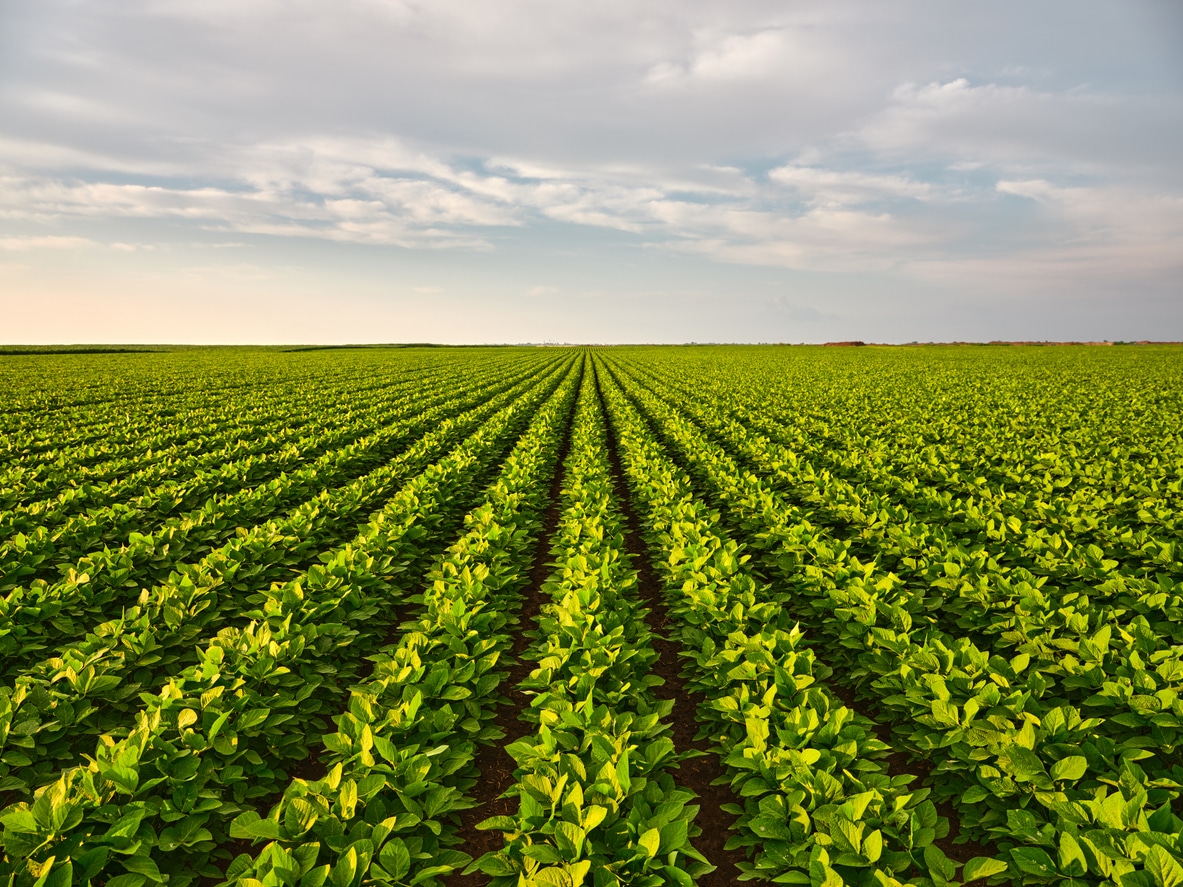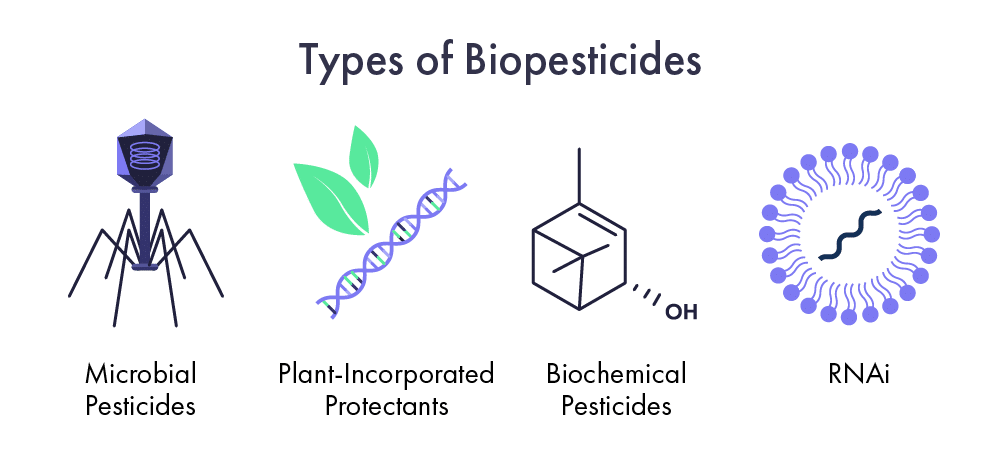
Harsh and toxic chemicals have become many agricultural industries’ default pest control strategy. They’re cheap and convenient, but they wreak havoc on the environment and often stunt the growth of beneficial soil organisms. However, with these toxic pesticides so ingrained in the agriculture economy, is it even possible to imagine a world where our crops are protected not by harsh chemicals, but by nature itself? Absolutely. And it isn’t just a dream—it’s the reality biopesticides are creating in our fields today.
Biopesticides, derived from natural materials like animals, plants, bacteria, and certain minerals, offer a sustainable alternative to traditional chemical pesticides. They work in harmony with the environment, targeting specific pathogens without the collateral damage often associated with synthetic insecticides and fungicides. As the world becomes more conscious of environmental impact and food safety, biopesticides are taking center stage, promising a safer, greener future in agriculture. But what exactly is a biopesticide, and how are researchers advancing this rapidly growing field? Let’s dive in.
What Are Biopesticides?
Biopesticides refer to a collection of nature-derived approaches to pest control. These methods differ from traditional chemical insecticides and fungicides in composition and impact. They are created from natural sources such as plants, microorganisms, minerals, and certain animal byproducts. Unlike synthetic broad-spectrum chemical pesticides, biopesticides usually target a specific animal, insect, fungus, or bacterium, reducing unintended harm to other species and the environment. This specificity and their natural derivation minimize ecological disruption and align with the growing trend toward sustainable agricultural practices.
The Role of Biopesticides in Sustainable Agriculture
Biopesticides play an important role in the transition to a more sustainable food supply worldwide. Compared with synthetic pesticides, these natural agents offer targeted pest and pathogen control with minimal environmental impact. Their use aligns with the principles of integrated pest management (IPM), which combines various agricultural practices for effective pest control. This approach minimizes the ecological footprint of farming, contributes to biodiversity conservation, and reduces the risk of chemical residues in food products. The growing adoption of biopesticides is a testament to the agricultural sector’s commitment to sustainability and health, reflecting a broader societal shift towards environmental responsibility and safety in food production.
What Are the Major Types of Biopesticides?
Biopesticides encompass a diverse range of products, each with unique properties, applications, and modes of action. Broadly, they fall into three categories: microbial pesticides, which use beneficial microorganisms; plant-incorporated protectants (PIPs), which involve genetic modifications; and biochemical pesticides, which include natural substances.
Microbial Pesticides
Microbial pesticides consist of microorganisms like bacteria, fungi, and viruses. These biopesticides eliminate specific pests by harnessing the microorganism’s inherent ability to infect the target pest, much like introducing a natural predator to control the prey population. These biopesticides minimize harm to other organisms and the environment. For example, Bacillus thuringiensis (Bt) is a bacterial pesticide widely used against destructive caterpillar species in agriculture. The specificity and safety of microbial pesticides make them an integral part of sustainable pest management practices.
Plant-Incorporated Protectants (PIPs)
Plant-incorporated protectants, or PIPs, refer to molecular biopesticides produced within genetically modified plants. Scientists alter the plant’s DNA to express certain traits and molecules that make it resistant to specific pests and increase tolerance to different environments. They typically accomplish this genetic engineering by introducing genes from other organisms that produce substances toxic to certain pests. For example, Bt corn is a common PIP that has been genetically modified to produce Bacillus thuringiensis toxin, which is effective against corn borers. Unlike external applications, PIPs provide inherent protection to the plant, reducing the need for additional pesticide treatments and supporting sustainable agricultural methods.
Biochemical Pesticides
Biochemical pesticide is a broad term that encompasses any naturally occurring substance that controls pests through non-toxic biological mechanisms. These substances include plant extracts, pheromones, and hormones that disrupt pest behavior or growth. For instance, certain plant-derived scents can interfere with insect mating patterns. Biochemical pesticides align with eco-friendly pest control, offering effective solutions with minimal environmental impact.
RNAi: The Next Generation of Biopesticides
RNA interference (RNAi) biopesticides are a novel approach to pathogen control. They work by utilizing RNA molecules to silence specific genes in target pests. This natural biological process effectively inhibits the pest’s ability to survive or reproduce. Enhanced RNAi methods are more targeted than many traditional biopesticides, further reducing non-target impacts and environmental effects.
However, RNAi biopesticides face challenges in field application, primarily due to stability and delivery issues. RNAi is especially vulnerable to UV light from the sun, temperature fluctuations, and microbial enzymes found on plants and in soil. Ensuring that delicate RNA molecules reach and affect the target pests without degrading from environmental exposure is a significant hurdle.
Common Delivery Methods for Biopesticides
The effectiveness of biopesticides largely depends on their delivery method. Here are some common methods used in their application:
- Foliar Sprays: Liquid biopesticides are sprayed directly onto plant leaves. Sprays are commonly used for immediate pest elimination with widespread application.
- Soil Treatment: Biopesticides are applied to the soil to target soil-dwelling pests or to be absorbed by plant roots. This method is effective for systemic protection against soil-borne diseases and pests.
- Seed Coating: Seeds are coated with biopesticides before planting. This coating provides early-stage protection to seedlings and reduces the need for later pesticide applications.
- Gene Insertion (For PIPs): Unique to plant-incorporated protectants (PIPs) where genes for pest resistance are inserted into the plant’s genome, allowing the plant to produce its own biopesticide.
Each method has its specific uses and advantages, tailored to the type of biopesticide, the target pest, and the crop being treated. Selecting the correct delivery method maximizes the efficacy of biopesticides while minimizing environmental impact.
The Issue With Traditional Biopesticide Delivery Methods
While traditional delivery methods for biopesticides are widely used, they have certain limitations. Stability issues arise when biopesticides degrade before reaching their target. Natural protective barriers in plants drastically reduce the efficacy of biopesticide absorption, restricting their impact and efficiency. Solubility limitations also pose a challenge, especially for hydrophobic compounds, constraining the range of substances that can be effectively delivered. The reduced scope of what can be delivered severely hinders the application of a broader range of potential biopesticide formulations.
Better Biopesticide Delivery With Phoreus’s BAPC and CAPC
Phoreus Biotech is revolutionizing biopesticide delivery with cutting-edge BAPC and CAPC technologies. Branched amphipathic peptide capsules (BAPC) are a groundbreaking approach to biopesticide delivery that enhances both stability and efficiency by creating a peptide nano-particle conjugate around the biopesticide compounds. In this way, the BAPC design overcomes common absorption barriers, which often limit the effectiveness of biopesticides, and ensures a more consistent and potent solution. This technology is particularly adept at delivering various substances, including proteins, peptides, and nucleic acids – including RNAi biopesticides.
Similarly, Phoreus’ corralling amphipathic peptide colloids (CAPC) represent another significant advancement in encapsulating technology. This technology specifically targets the delivery of hydrophobic active ingredients, addressing the challenge of solubility limitations. CAPC expands the range of biopesticides that can be effectively utilized, opening new doors for agricultural pest control solutions.
BAPC and CAPC technologies offer more effective, environmentally friendly, and sustainable solutions for protecting plants.
Advantages of Enhanced Biopesticide Delivery Systems
The advancements in biopesticide delivery systems, particularly those developed by Phoreus Biotech, bring several benefits to sustainable agriculture. Enhanced delivery systems like BAPC and CAPC ensure greater stability of biopesticides, reducing degradation and loss of efficacy during application. This increased stability means lower quantities of biopesticides may be required, minimizing environmental impact. Improved delivery also ensures better plant absorption and utilization, leading to more effective pest management.
Comparing Traditional Delivery Methods to Phoreus’ Technology
While effective in some scenarios, traditional biopesticide delivery methods often face challenges like environmental impact, stability issues, and limited scope of application. Phoreus Biotech’s BAPC and CAPC technologies represent a significant leap forward in comparison. These technologies enhance the stability and efficacy of biopesticides, overcome solubility and absorption barriers, and reduce environmental impact due to their targeted delivery system. This allows for a broader range of biopesticide formulations to be used effectively. The result is a more targeted, efficient, and environmentally responsible approach to plant protection, aligning with global efforts towards sustainable agriculture.
Looking Ahead
As we have seen, the future of biopesticides is intricately intertwined with advancements in delivery technologies. Phoreus Biotech’s innovative BAPC and CAPC delivery system products pave the way for more effective and environmentally friendly pest management solutions. Ongoing research and development efforts are doubly committed to improving the efficacy and sustainability of biopesticide applications. As the agricultural industry evolves, Phoreus Biotech promises to drive progress toward safer, more effective biopesticides that benefit both the environment and agricultural productivity.
Contact our team today to learn more about how Phoreus Biotech is revolutionizing sustainable agriculture and how BAPC and CAPC could benefit your research.
Looking for a partner in driving biopesticide innovation? We want to collaborate! Click here to discover how you can work with Phoreus Biotech.
